#volodymyr the great
Text
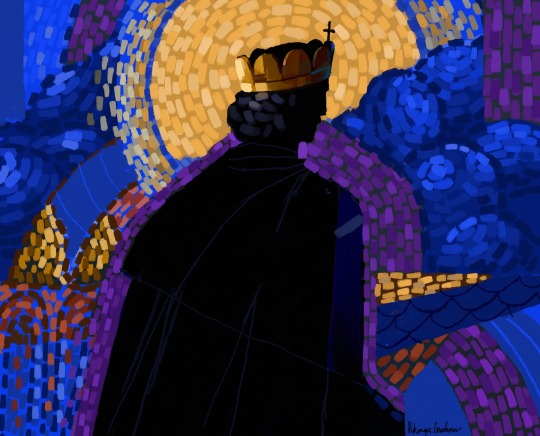
(c) @ viktor.grudakov
Volodymyr the Great, Grand Prince of Kyiv in 978-1015
#ukraine#украина#україна#Kyiv#art#illustration#volodymyr the great#Київ#киев#арт#ілюстрація#иллюстрация#володимир великий
81 notes
·
View notes
Photo

King Volodymyr the Great by Myron Yatsiv, 1987
57 notes
·
View notes
Text

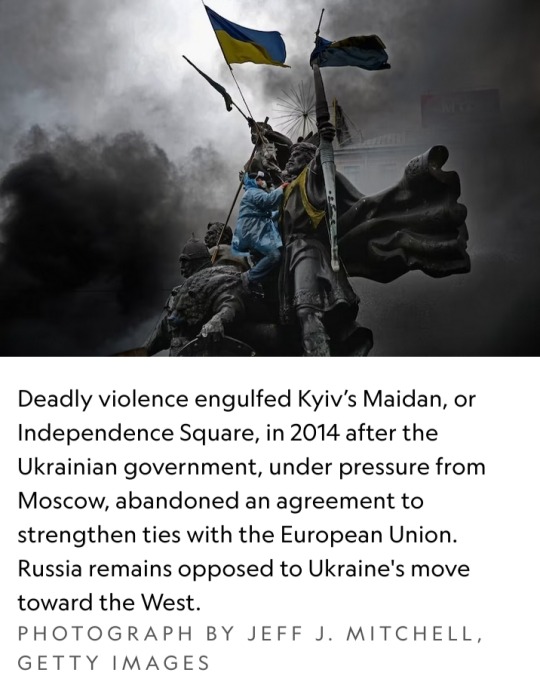
It’s been a year since Russia invaded Ukraine, and the battle continues.
Military and civilian deaths and injuries on both sides have been estimated in the hundreds of thousands, and millions more Ukrainians have been displaced.
What set the stage for today’s conflict? Here’s a look back at the long, intertwined history of the contentious neighbors.
The two countries’ shared heritage goes back more than a thousand years to a time when Kyiv, now Ukraine’s capital, was at the center of the first Slavic state, Kyivan Rus, the birthplace of both Ukraine and Russia.
In A.D. 988, Volodymyr the Great, the pagan prince of Novgorod and grand prince of Kyiv, accepted the Orthodox Christian faith and was baptized in the Crimean city of Chersonesus.
From that moment on, Russian leader Vladimir Putin recently declared, “Russians and Ukrainians are one people, a single whole.”
Yet, over the past ten centuries, Ukraine has repeatedly been carved up by competing powers.
Mongol warriors from the east conquered Kyivan Rus in the 13th century.

In the 16th century, Polish and Lithuanian armies invaded from the west.
In the 17th century, war between the Polish-Lithuanian Commonwealth and the Tsardom of Russia brought lands to the east of the Dnieper River under Russian imperial control.
The east became known as "Left Bank" Ukraine; lands to the west of the Dnieper, or "Right Bank," were ruled by Poland.
More than a century later, in 1793, right bank (western) Ukraine was annexed by the Russian Empire.
Over the years that followed, a policy known as Russification banned the use and study of the Ukrainian language, and people were pressured to convert to the Russian Orthodox faith.
Ukraine suffered some of its greatest traumas during the 20th century.
After the communist revolution of 1917, Ukraine was one of the many countries to fight a brutal civil war before being fully absorbed into the Soviet Union in 1922.
In the early 1930s, to force peasants to join collective farms, Soviet leader Joseph Stalin orchestrated a famine that resulted in the starvation and death of millions of Ukrainians.
Afterward, Stalin imported large numbers of Russians and other Soviet citizens—many with no ability to speak Ukrainian and with few ties to the region—to help repopulate the east.

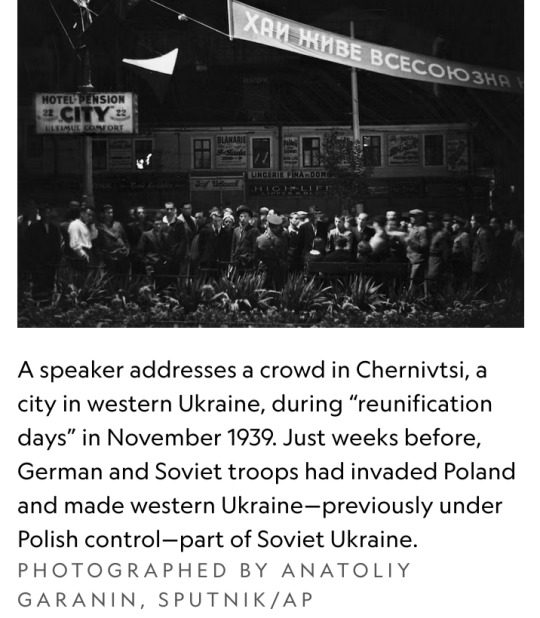

These legacies of history created lasting fault lines. Because Eastern Ukraine came under Russian rule much earlier than western Ukraine, people in the east have stronger ties to Russia and have been more likely to support Russian-leaning leaders.
Western Ukraine, by contrast, spent centuries under the shifting control of European powers such as Poland and the Austro-Hungarian Empire — one reason Ukrainians in the west have tended to support more Western-leaning politicians.
The eastern population tends to be more Russian-speaking and Orthodox, while parts of the west are more Ukrainian-speaking and Catholic.
With the collapse of the Soviet Union in 1991, Ukraine became an independent nation. But uniting the country proved a difficult task.
For one, “the sense of Ukrainian nationalism is not as deep in the east as it is in west,” says former ambassador to Ukraine Steven Pifer.
The transition to democracy and capitalism was painful and chaotic. Many Ukrainians, especially in the east, longed for the relative stability of earlier eras.
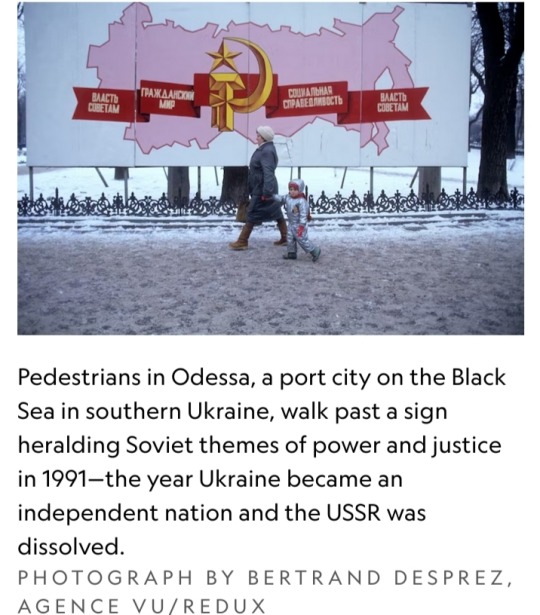
"The biggest divide after all these factors is between those who view the Russian imperial and Soviet rule more sympathetically versus those who see them as a tragedy," says Adrian Karatnycky, a Ukraine expert and former fellow at the Atlantic Council of the United States.
These fissures were laid bare during the 2004 Orange Revolution in which thousands of Ukrainians marched to support greater integration with Europe.
On ecological maps, you can even see the divide between the southern and eastern parts of Ukraine—known as the steppes—with their fertile farming soil and the northern and western regions, which are more forested, says Serhii Plokhii, a history professor at Harvard and director of its Ukrainian Research Institute.
He says a map depicting the demarcations between the steppe and the forest, a diagonal line between east and west, bears a "striking resemblance" to political maps of Ukrainian presidential elections in 2004 and 2010.
Crimea was occupied and annexed by Russia in 2014, followed shortly after by a separatist uprising in the eastern Ukrainian region of Donbas that resulted in the declaration of the Russian-backed People’s Republics of Luhansk and Donetsk.
Today, the two countries find themselves in conflict yet again, fault lines that reflect the region's tumultuous history.
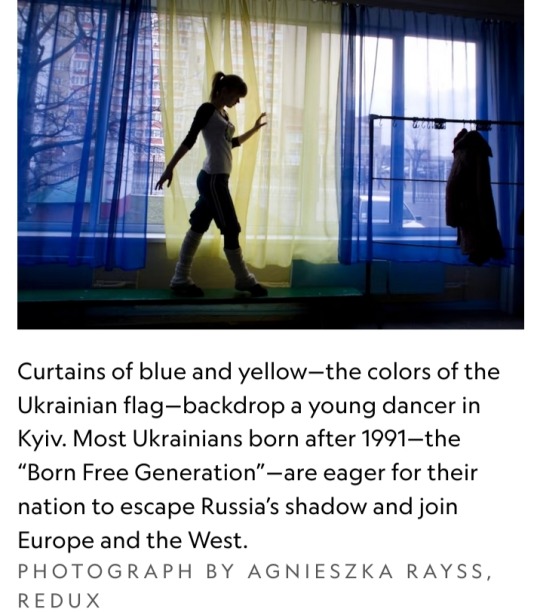
Portions of this article were originally published during the 2014 Crimean crisis. It has been updated to reflect current events.
#Ukraine#Russia#Kyiv#Kyivan Rus#Volodymyr the Great#Vladimir Putin#Russification#Joseph Stalin#2004 Orange Revolution#Volodymyr Oleksandrovych Zelenskyy#Volodymyr Zelenskyy
40 notes
·
View notes
Text
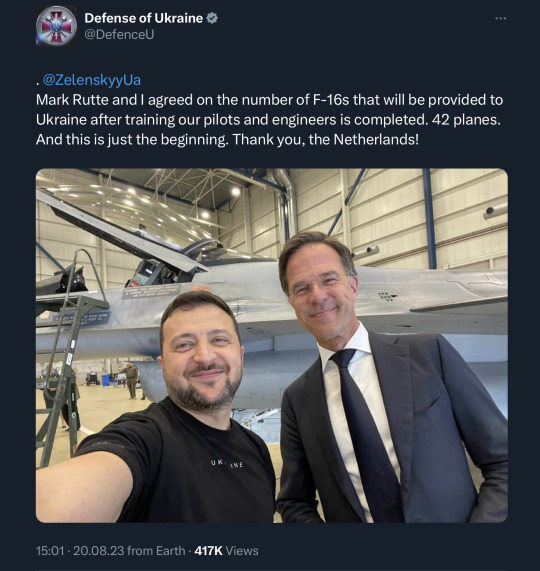
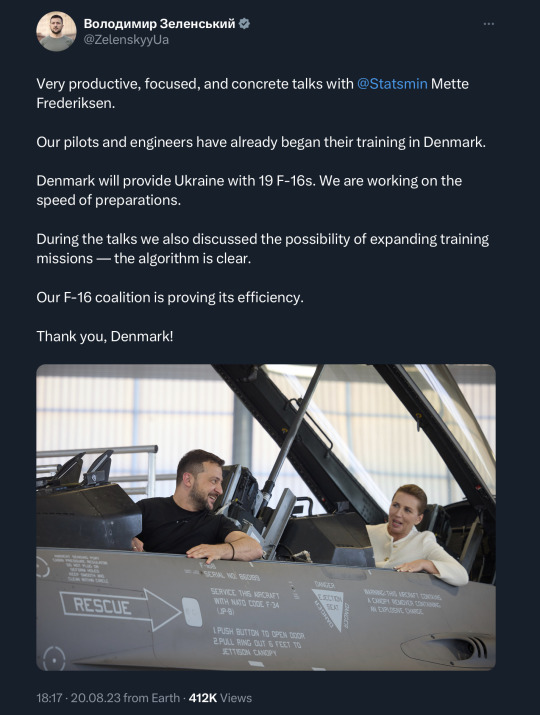
#volodymyr zelenskyy#volodymyr zelensky#Ukraine#Netherlands#Denmark#mark rutte#mette frederiksen#f-16s#unfortunately embedding doesn’t work anymore (or at least right now)#Twitter/X#💪#great news
23 notes
·
View notes
Text
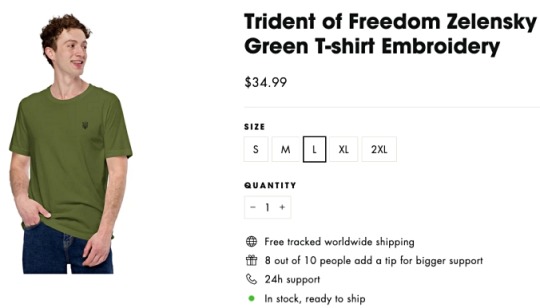
TBH, I don't know whether this is exactly a NEW color, but a company which sells pro-Ukraine merchandise offers T-shirts in a color they call "Zelensky Green".
Presuming the Google Translate grammar* is correct, the color sounds alliterative in Ukrainian:
Зеленський зелений = Zelens'kyy zelenyy

The president has a number of T-shirts in that color with different emblems. Here he's wearing one with the logo of the Armed Forces of Ukraine (Збройні Сили України or ЗСУ for short). Though most of the time he seems to favor ones featuring the Trident (tryzub/тризуб) – the coat of arms of Ukraine which dates back to the time of Prince Volodymyr the Great (c. 956–1015) who minted coins featuring the symbol.
If they named a color after Putin it would probably be some variation of blood red. Trump might be a big customer for neckties in that shade. Trump himself could inspire a new shade called Trump orange.
As for Ukraine, "Zelensky green" joins cyber yellow and sapphire on the country's color palette.
––––––––––
* While there have been recent improvements, Google Translate needs work when it comes to Slavic languages.
#invasion of ukraine#ukraine#t-shirts#zelensky green#volodymyr zelenskyy#trident#tryzub#ukraine's color palette#prince volodymyr the great#колірна палітра#футболка#тризуб#зеленський зелений#володимир зеленський#ЗСУ#україна#владимир путин#путин хуйло#дональд трамп#руки прочь от украины!#геть з україни#деокупація#вторгнення оркостану в україну#україна переможе#слава україні!#героям слава!
4 notes
·
View notes
Text
Russia is a terrorist state
#ukraine#stand with ukraine#stop russia#stoprussizm#stop putin#stop russian aggression#russia is a terrorist state#new york times#gardiyan#volodymyr zelensky#USA#great britain#boris johnson#fuck putin#follow#Repost#like or reblog#shareable
27 notes
·
View notes
Text
I’ve finished “Love in the big city 3″ and the plot is so dumb and simple that I pretty much understood all of it despite having no subtitles at all. I skipped through all the scenes that didn’t have the smol babe in them though. Here, have some of my fav screencaps.
first off... baby boy, baby:

how is his face so perfect in profile:

you could almost think he was a tall boy in this, with the camera angle and all:

swoopy lips level 3000:

I am absolutely obsessed with this teeny tiny freckle on the side of his nose:

#Володимир Зеленський#volodymyr zelensky#volodymyr zelenskiy#Volodymyr Zelenskyy#look if we could all agree upon one (1) way to transliterate his name that'd be great tbh#Love in the big city 3#if I get bored some time I might go back through the chat with my friend#whom I spammed with screncaps of the other Zelenskiy movies some weeks ago#and post them here as well
27 notes
·
View notes
Photo
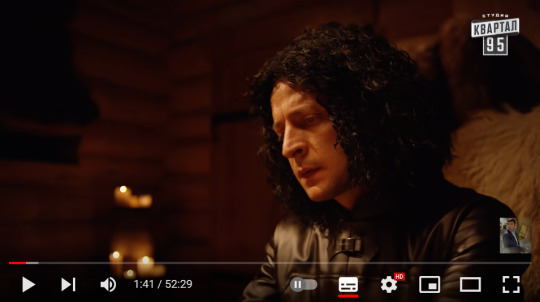
Ze as John Snow the grand prince (knyaz*) of Kiev. It was one of Vasya’s dream visions. His appearance was quite funny here. He looked like a rock star. :D Luckily enough, in the reality Holoborodko escaped the fate of the knyaz.
*Hey, how to transliterate “князь” in English? I love the sound of this word! In both Ukrainian and Polish. “Kniaź” mainly reminds me of Prince Jarema, tho. ;)
#Volodymyr Zelenskyy#volodymyr zelensky#knyaz#князь#sluga naroda#sluha narodu#Vasya as John Snow#GoT#game of thrones#great prince of kiev#Vasya as a prince!#Vasya as a rockstar!
12 notes
·
View notes
Quote
… most in the West and many who opposed Zelensky in 2019 were preoccupied with his political inexperience prior to winning the presidency, frequently using terms like “novice”, “neophyte,” and even “pretend president”. True, he was new to electoral politics as of 2019: he was a comedian, and even called himself a “clown” on occasion – in his trademark ironic tone. As we will argue in Chapters 6-7, too much has been made of his being inexperienced and a former comedian. In fact, we show, he learned rather quickly on the job and was having a surprisingly successful first term as president by Ukrainian standards before Russia’s full-on invasion, including passing some key reform policies. Moreover, he may have been new to electoral politics, but he was not new to politics in general, having been a businessman and high-level executive (general producer of the country’s most watched television network) who had made a small fortune out of relatively nuanced political satire and media management.
Olga Onuch, Henry E. Hale, The Zelensky Effect
#Olga Onuch#Henry E. Hale#Volodymyr Zelenskyy#non-fiction#Ukraine#currently reading and highly recommend#this is a great book
2 notes
·
View notes
Text
Excerpt from Zelenskyy's speech (Video 2)
Full speech:
#volodymyr zelensky#volodymyr zelenskyy#wolodymyr selenskyj#president zelensky#president zelenskyy#selenskyj#volodomir zelensky#president volodymyr zelenskyy#vladimir zelensky#volodimir zelenski#zelensky#selenski#uk#great britain#parliament#house of commons#war#ukraine#russia
3 notes
·
View notes
Text
youtube
Boris Johnson arrived in Kyiv, 24.08.2022, for a visit on the Independence Day of Ukraine.
#Ukraine#stand with ukraine#Great Britain#Volodymyr Zelenskyy#Boris Johnson#Kyiv#Independence Day of Ukraine#Youtube
0 notes
Text
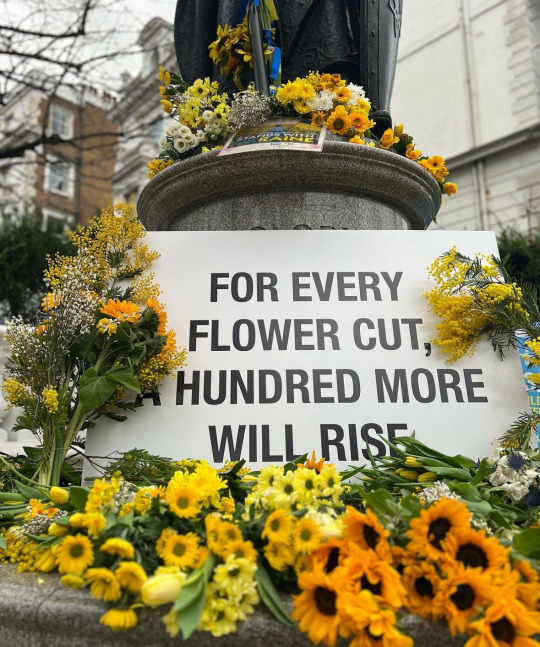
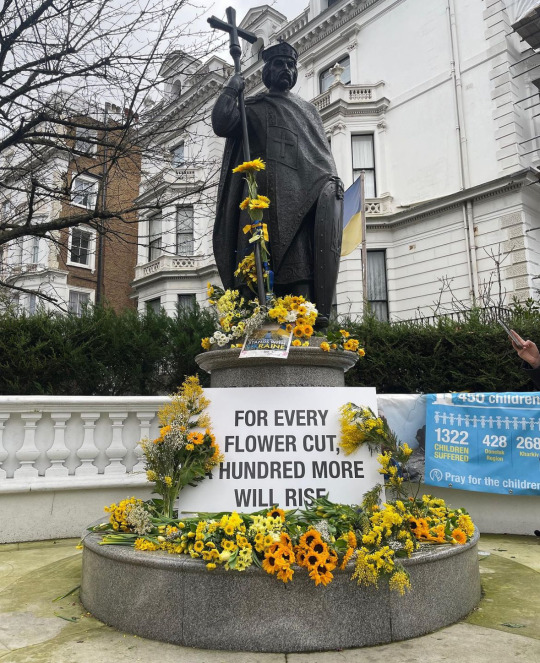
after a Russian man had cut the sunflowers from the Volodymyr the Great monument, Ukrainians and London citizens came to remind him and everyone else the truth about Ukrainian resistance:
"For every flower cut, a hundred more will rise"
730 notes
·
View notes
Text
RESTORATION OF EMPIRE IS THE ENDGAME FOR RUSSIA'S VLADIMIR PUTIN
RESTORATION OF EMPIRE IS THE ENDGAME FOR RUSSIA’S VLADIMIR PUTIN
Reading Russian President Vladimir Putin’s mind is rarely a straightforward task, but on occasion the Kremlin leader makes it easy. Such was the case on Thursday, when Putin met with a group of young Russian entrepreneurs. Anyone looking for clues as to what Putin’s endgame for Ukraine might be should read the transcript, helpfully released here in English. Putin’s words speak for themselves:…

View On WordPress
1 note
·
View note
Text

#🤣🤣🤣#so true though#great ad#volodymyr zelenskyy#volodymyr zelensky#meme#Ukraine#Ukrainian Railways#also#👏👏👏
44 notes
·
View notes
Text
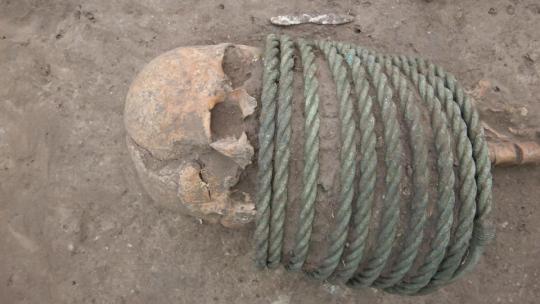
Skeletons With Rings Around Their Necks Uncovered at Ancient Cemetery In Ukraine
The discovery of a cemetery in Ukraine from a millennium ago has revealed axes, swords, jewelry and, unexpectedly, buckets around the feet of some of the dead.
Archaeologists in Ukraine have discovered a 1,000-year-old cemetery whose dead were buried with weapons, jewelry and, curiously, buckets around some of their feet.
The 11th-century cemetery is located about 50 miles (80 kilometers) south of Kyiv. Of its 107 graves, "most of the identified burials were deposed in wooden coffins," Vsevolod Ivakin and Vyacheslav Baranov, both archaeologists at the National Academy of Sciences of Ukraine, wrote in a paper they presented at the annual meeting of the Archaeological Institute of America, which was held Jan. 4-7 in Chicago.

The cemetery's dead include both men and women. Some of the men were buried with weapons, such as axes, spearheads and swords, Ivakin and Baranov wrote. A few of the women were buried with elaborate neck rings, which "are found only on necks in female burials and were apparently a kind of social marker," in this region at the time, Baranov said in an email. Some of the people were buried with wooden buckets at their feet, which may have been part of funerary rituals. Other sites that have buckets within burials have been found in the region.
The archaeologists also found a stone altar, as well as bracelets, beads and the remains of food offerings, such as chicken bones and eggshells, among other artifacts. The altar could have been used for Christian or pagan rituals, or possibly both.
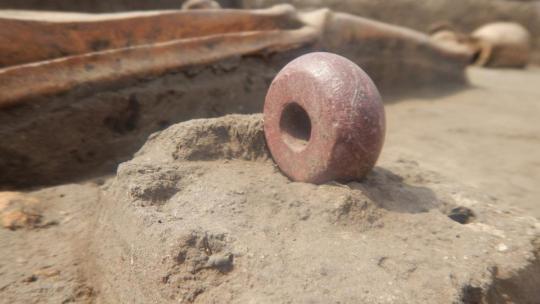
Some of the artifacts are similar to those found in the Baltic, hinting that some of the people buried in the cemetery might have come from that region to serve in the militaries of the rulers of Kyiv, such as Volodymyr the Great (who reigned from 980 to 1015) and Yaroslav the Wise (who reigned from 1019 to 1054), the archaeologists noted. The territories that Volodymyr the Great ruled stretched to the Baltic region.
At the time the cemetery was in use, people in Ukraine were converting to Christianity, the researchers said. This included Volodymyr the Great, who left behind his pagan roots and was baptized around 987 before his marriage to Anna, the sister of the Byzantine emperor Basil II.
The researchers excavated the cemetery between 2017 and 2022. The ongoing Russian invasion of Ukraine, however, has paused many excavations in Ukraine, including this one, the archaeologists said.
By Owen Jarus,
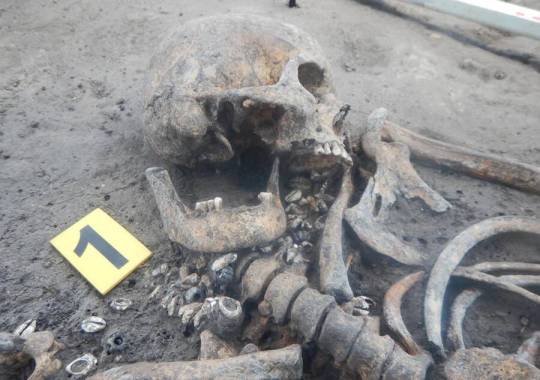
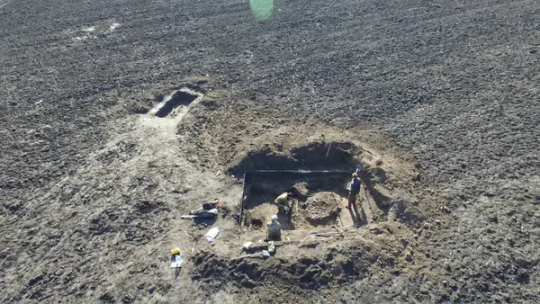
#Ukraine#Skeletons With Rings Around Their Necks Uncovered at Ancient Cemetery In Ukraine#ancient grave#ancient tomb#ancient cemetery#ancient artifacts#archeology#archeolgst#history#history news#ancient history#ancient culture#ancient civilizations
306 notes
·
View notes
Text
I just don't want my country to be forgotten.
I don't want people to forget that Ukraine, as well as Belarus, never wanted to be with russia, NEVER, and never will. russia is destroying everything dear to me.
I wish to see the days when Ukraine is free, with all the territories, with no russian language, no occupiers, nothing russian. I wish to see the days when people start saying Kyivan Rus and Volodymyr the Great. I wish to see Belarus with their REAL flag and official language and without ANYTHING russian. I wish to see people posting Belaruthian writers and artists and call them Belaruthian, not russian. We are not russian. We will never be russian. But we pay a huge price for that.
I want people in this fandom to understand my hatred, to understand what I feel when I read about, for example, russian occupation of Lithuania and Latvia.
I want people to understand what I feel when I search for articles about anything in Belaruthian, and I find NOTHING. Everything is in russian. I want people to understand what I feel when I hear my former classmate telling me that a russian rocket killed her neighbour.
If my land is gonna be forgotten, it means my family is gonna be forgotten, and I am gonna be forgotten. I don't want to be forgotten.
If you think "it's just politics, you shouldn't bring politics" - you are a very fucking cruel and heartless person.
#hetalia#hws ukraine#aph ukraine#hws belarus#aph belarus#tw: hws aph russia#hws lithuania#aph lithuania#hws latvia#aph latvia
242 notes
·
View notes